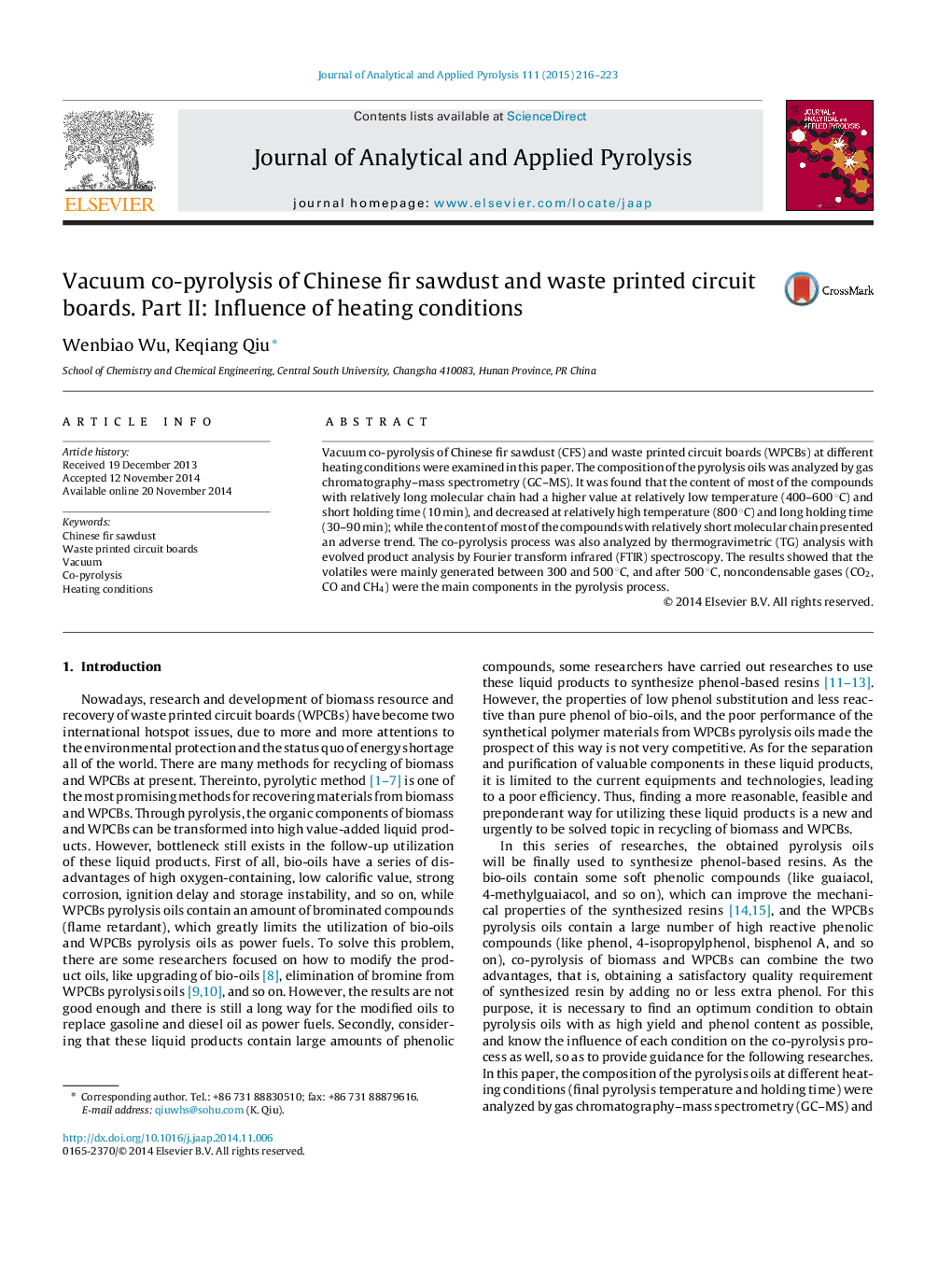| Article ID | Journal | Published Year | Pages | File Type |
|---|---|---|---|---|
| 1196720 | Journal of Analytical and Applied Pyrolysis | 2015 | 8 Pages |
•Final pyrolysis temperature has a greater influence than holding time in general.•The volatiles were mainly formed between 300 and 500 °C in the co-pyrolysis process.•Noncondensable gases (CO2, CO, CH4, etc.) were the main components after 500 °C.
Vacuum co-pyrolysis of Chinese fir sawdust (CFS) and waste printed circuit boards (WPCBs) at different heating conditions were examined in this paper. The composition of the pyrolysis oils was analyzed by gas chromatography–mass spectrometry (GC–MS). It was found that the content of most of the compounds with relatively long molecular chain had a higher value at relatively low temperature (400–600 °C) and short holding time (10 min), and decreased at relatively high temperature (800 °C) and long holding time (30–90 min); while the content of most of the compounds with relatively short molecular chain presented an adverse trend. The co-pyrolysis process was also analyzed by thermogravimetric (TG) analysis with evolved product analysis by Fourier transform infrared (FTIR) spectroscopy. The results showed that the volatiles were mainly generated between 300 and 500 °C, and after 500 °C, noncondensable gases (CO2, CO and CH4) were the main components in the pyrolysis process.
